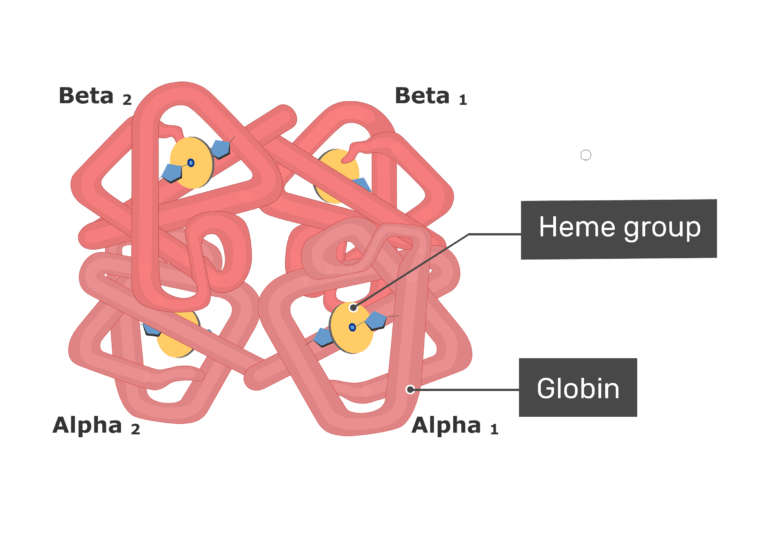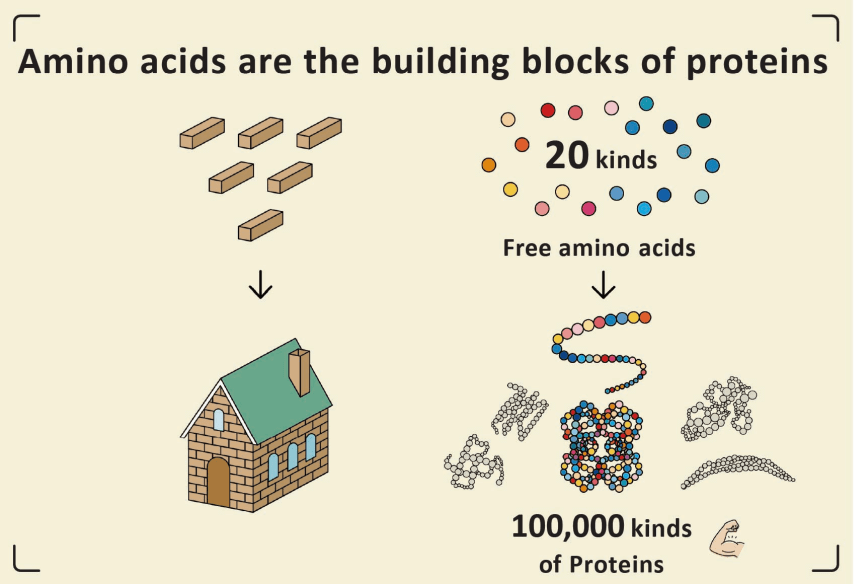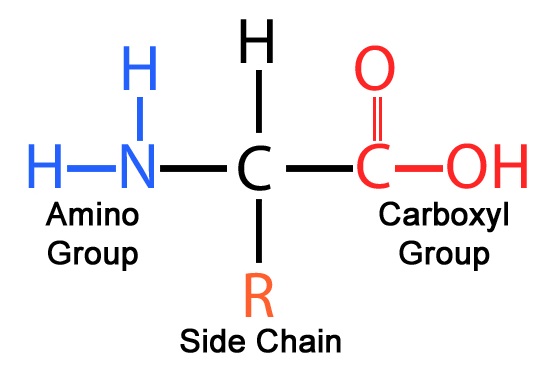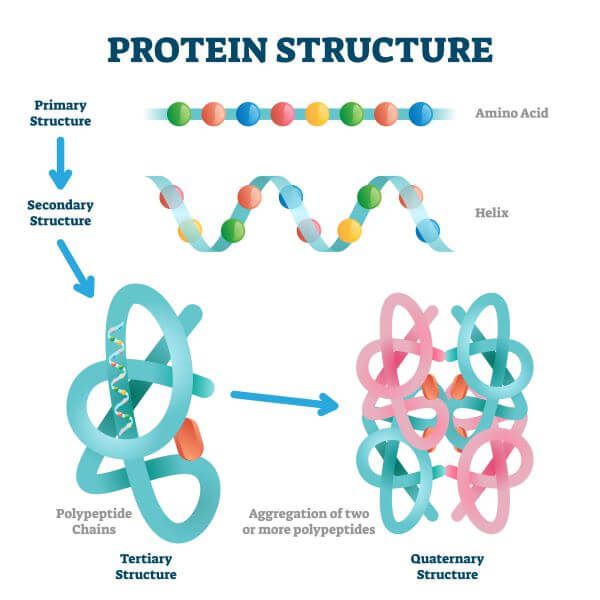What is Protein?
Protein are made from long chains of amino acids.
Amino Acids
Amino acids all have a similar structure, with carboxyl and amino group and side chain referred as functional groups (R group).
What makes each amino acid unique, is the presence of a variable, or R group. The R group gives each amino acid its chemical properties.
Protein Structure
Amino acids are linked together by peptide bonds, forming long polypeptide chains.
As these chains form, the polypeptide develops multiple levels of structure, which contributes to its overall shape. These levels are called the primary, secondary, tertiary and quaternary structures.
Primary Structure
The primary structure is the order of amino acids in the polypeptide chain. Amino acids can be likened to letters in the alphabet, Just as thousands of words can be constructed by varying the 26 letters in our alphabet, so too can different proteins be created by varying the number and sequence of just 20 amino acids.
Secondary Structure
The secondary structure refers to the pleated sheet or helix that a protein chain can form due to hydrogen bonding and other chemical attractions between the R groups of nearby amino acids.
Tertiary Structure
The overall shape of a polypeptide is called its tertiary structure. This level of structure is created when the secondary structure folds and twists upon itself. The tertiary structure is held in place by a variety of bonds and interactions that form between the R groups of the amino acids on the chain. Once polypeptides have formed a tertiary structure, they are commonly referred to as proteins.
Quaternary Structures
In some cases, proteins can form quaternary structures, which consist of interactions between multiple proteins. These interactions often result in the formation of large protein complexes.
Examples of proteins that have quaternary structures are hemoglobin and the sodium channels in the cell membranes.






:max_bytes(150000):strip_icc()/GettyImages-471695531-4460e9bb531d40feaa578a0236defc80.jpg)
